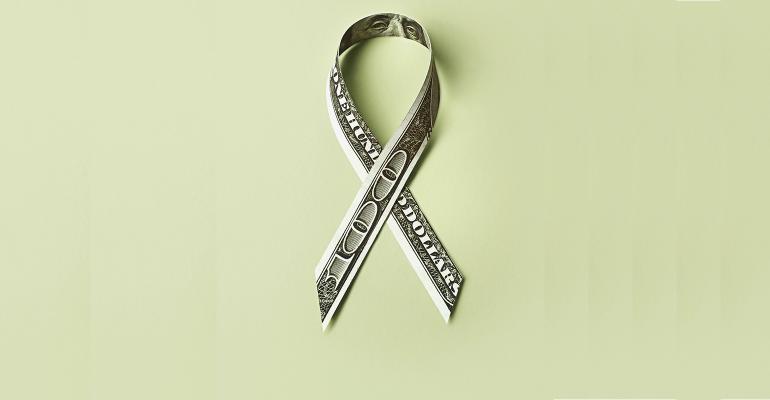Over the past decade of working with multigenerational families, helping them to become more effective with their philanthropy, I’ve learned many lessons. The field of strategic philanthropy is more sophisticated and complex than ever, and the understanding of philanthropic best practices has evolved.
Some of the challenges we face in today’s world may seem intractable; however, the opportunities for family philanthropy to make a difference are better defined.
And, although philanthropy is highly individualized, there are some broadly applicable lessons. Here are eight that have risen to the top:
Create a Safe Zone
Start by creating a new “table” for the discussion of family philanthropy and invite all young adult and adult family members to sit there as equals. Establish ground rules for participation that support a safe zone for effective communication: This can often lead to more engagement, enhanced family dynamics and greater impact. Different generations of family members often look through very different lenses—derived from varied life experiences, values and goals—that can help weave a rich tapestry for family giving.
Look Through Two Lenses
Families starting their philanthropic journey together have two important initial questions to answer: The first, focused externally, asks “What difference do we want to make in our community or beyond?” The second, looking internally, asks, “What difference do we want to make for ourselves?” Answering both of these questions helps families become more effective in working together and crafting an equally valued mission statement that directs their giving to achieve certain kinds of impact.
Focus Your Giving
Develop a mission statement to use as a road map, focusing giving on a few carefully selected causes. Learn to say no to causes that fall outside of your mission statement and avoid the “peanut butter” approach to giving that spreads your resources too thinly over a broad area.
Support Smaller, Local Nonprofits
Although large household-name nonprofits often do great work, many times they’re well funded and deeply endowed. Because small grass roots organizations often struggle for resources, gifts to them can make a huge difference. Moreover, giving locally enables family members to become more engaged, with better opportunities to ask and listen to what recipients need. There are also chances to volunteer, serve on boards and get to know the leaders of the nonprofits working closest to the problems.
Take Risks With a Portion of Giving
Philanthropy is best viewed as “risk capital” with the potential to drive innovation. Government efforts are increasingly limited by political gridlock and financial limitations. Private investment, motivated by financial return, often avoids much risk. Private philanthropic capital is much less accountable; thus it's able to try new ideas that just might succeed.
Solutions to society’s most-challenging problems will require innovation, which necessarily involves risk. Dedicated to a purely social return on investment, philanthropic capital may well be the most effective and final stronghold for true risk-taking. Guided by your mission, be willing to take some “moonshots.”
View Philanthropic Capital Holistically
Money donated to a private foundation (PF) or a donor-advised fund (DAF) has already left the donor’s balance sheet, is legally owned by an Internal Revenue Code Section 501(c)(3) entity and can’t be reclaimed. Usually, a small percentage of this money goes to grants. The rest is usually invested for income—often without regard for its impact.
Bizarrely, such capital can be invested in companies that directly oppose the donors’ mission. A PF promoting health, for example, might invest in tobacco. A DAF devoted to girls’ empowerment might invest in companies that employ girls in foreign sweatshops. A PF fighting climate change might invest in fossil fuels.
Philanthropic capital should be invested not only to avoid contradiction with your mission but also to help achieve that mission. Viewing such capital holistically, investing it for impact and financial return can unleash billions of dollars toward improving the world.
View Philanthropy as a Partnership
Rather than taking a “we’re here to solve your problems” approach, consider philanthropy as a partnership—a collaboration between you and the needs of the nonprofit. Organizations seeking support usually have great insights into strategies and solutions. A partnership approach—in which both parties work as equals to achieve their missions—diminishes power dynamics and enhances outcomes.
Have Fun!
When the kids get older (and maybe have children of their own), it’s harder for many families to find the time and focus to work together on joint projects. Philanthropy provides an opportunity to come together to share values, solve problems, learn, have fun and enjoy this next phase of the family’s life.
Bruce DeBoskey, J.D., is a philanthropic strategist working across the United States with The DeBoskey Group to help families, businesses, foundations and family offices design and implement thoughtful philanthropic strategies and actionable plans. He is a frequent keynote speaker at conferences and workshops on philanthropy. Visit deboskeygroup.com or contact him on Twitter @BDeBo.





